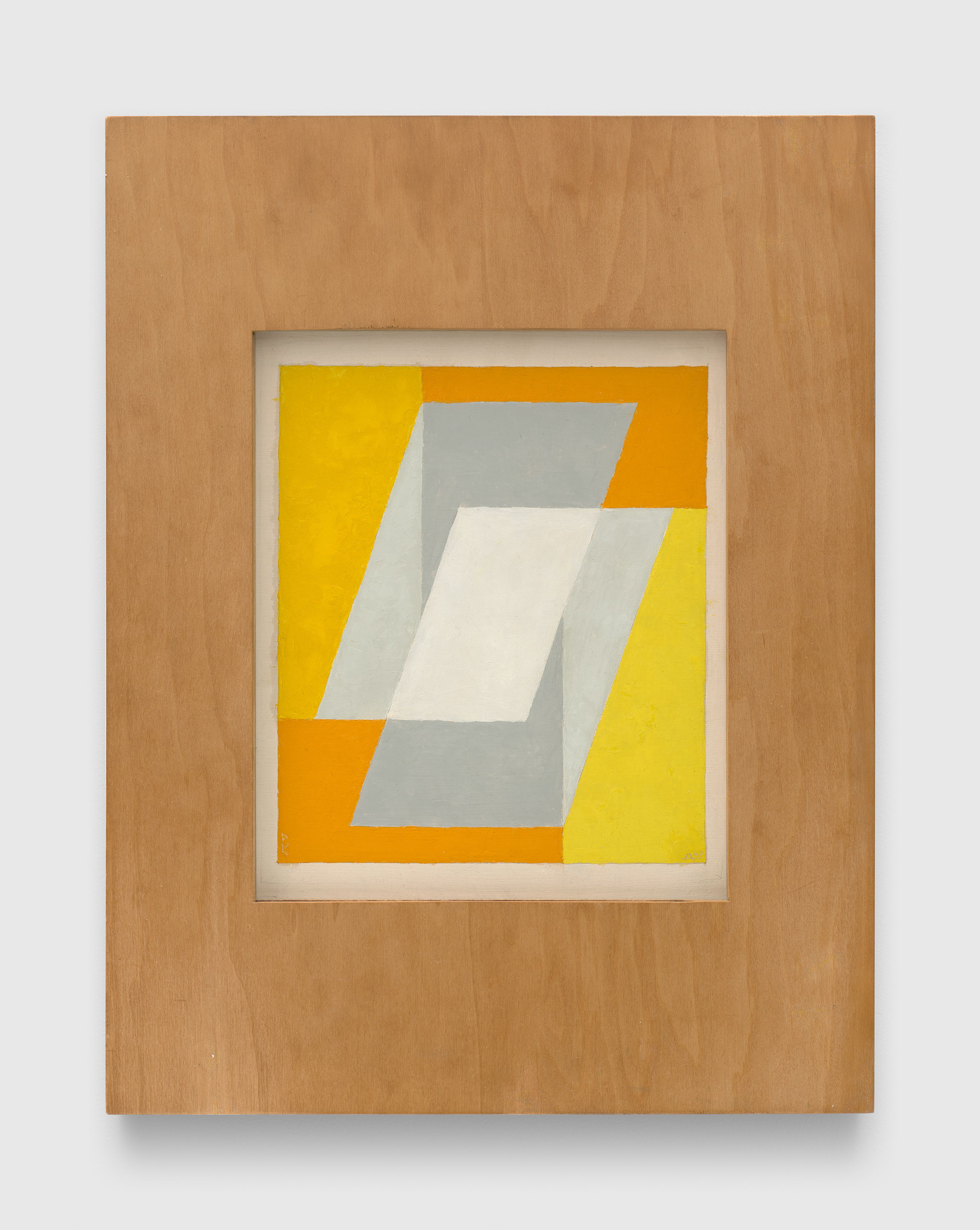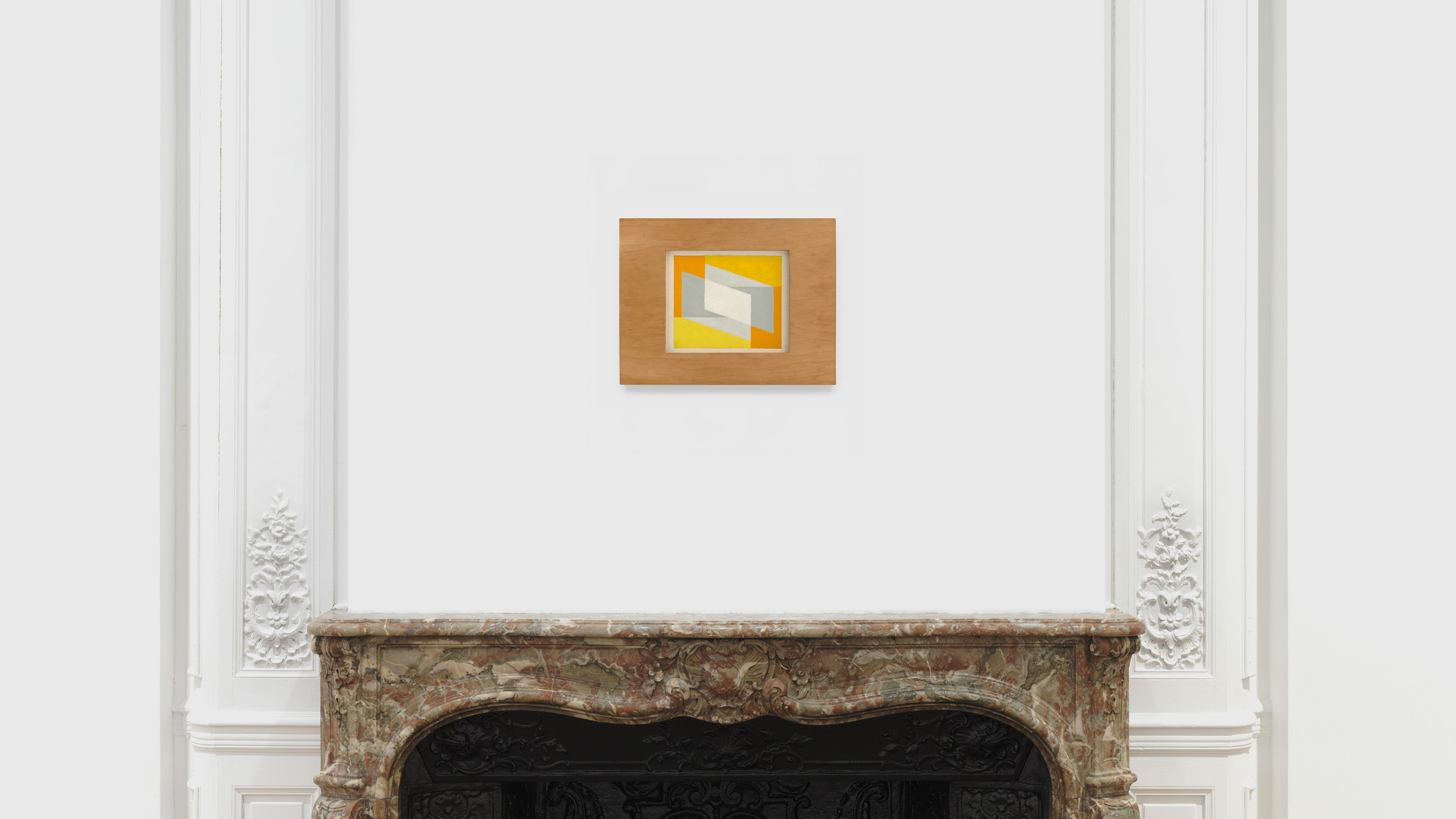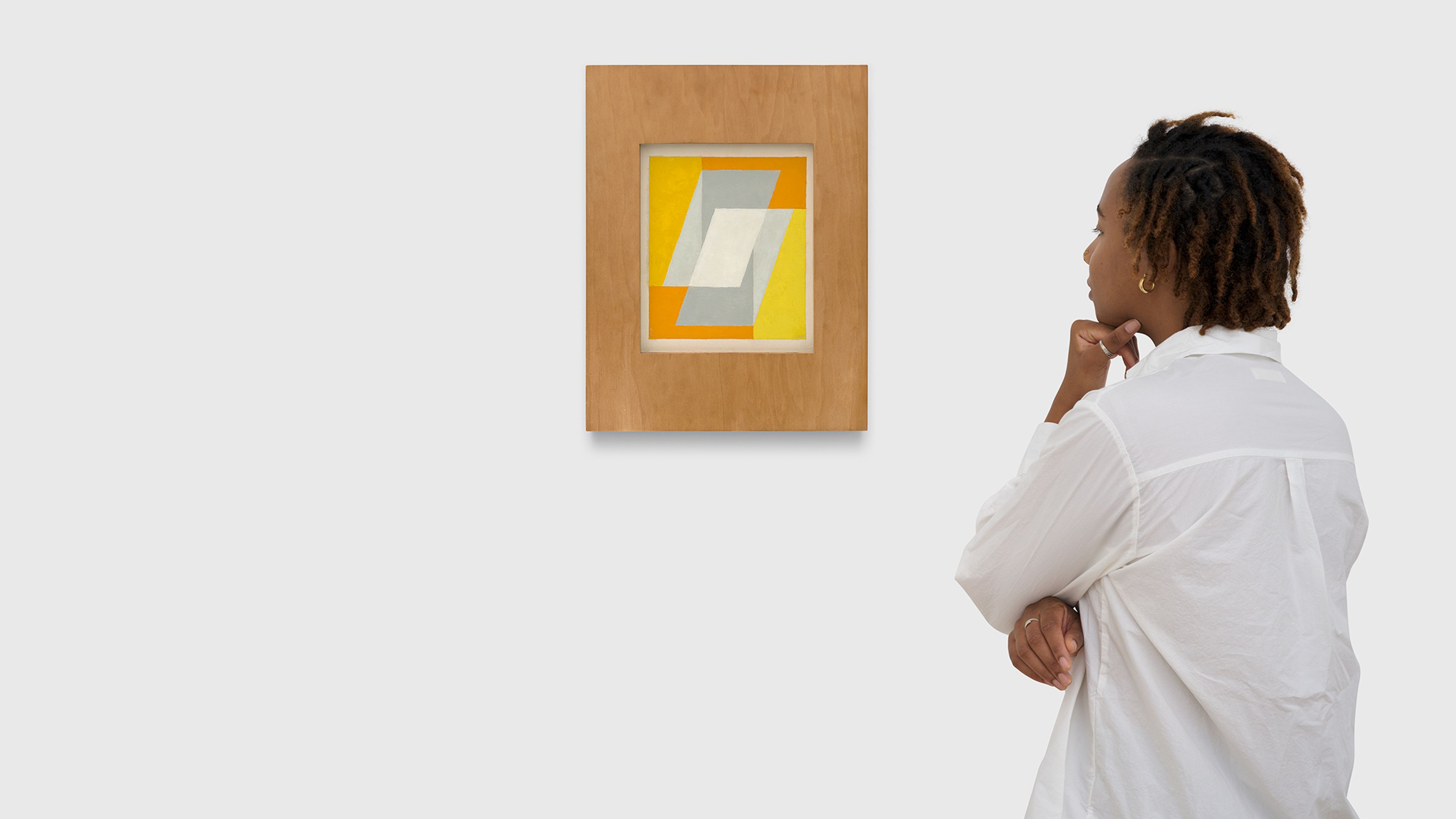Exceptional Works: Josef Albers
Untitled, 1949
Oil on board in artist's frame Framed: 17 1/2 x 13 1/2 x 7/8 inches 44.5 x 34.3 x 2.2 cm
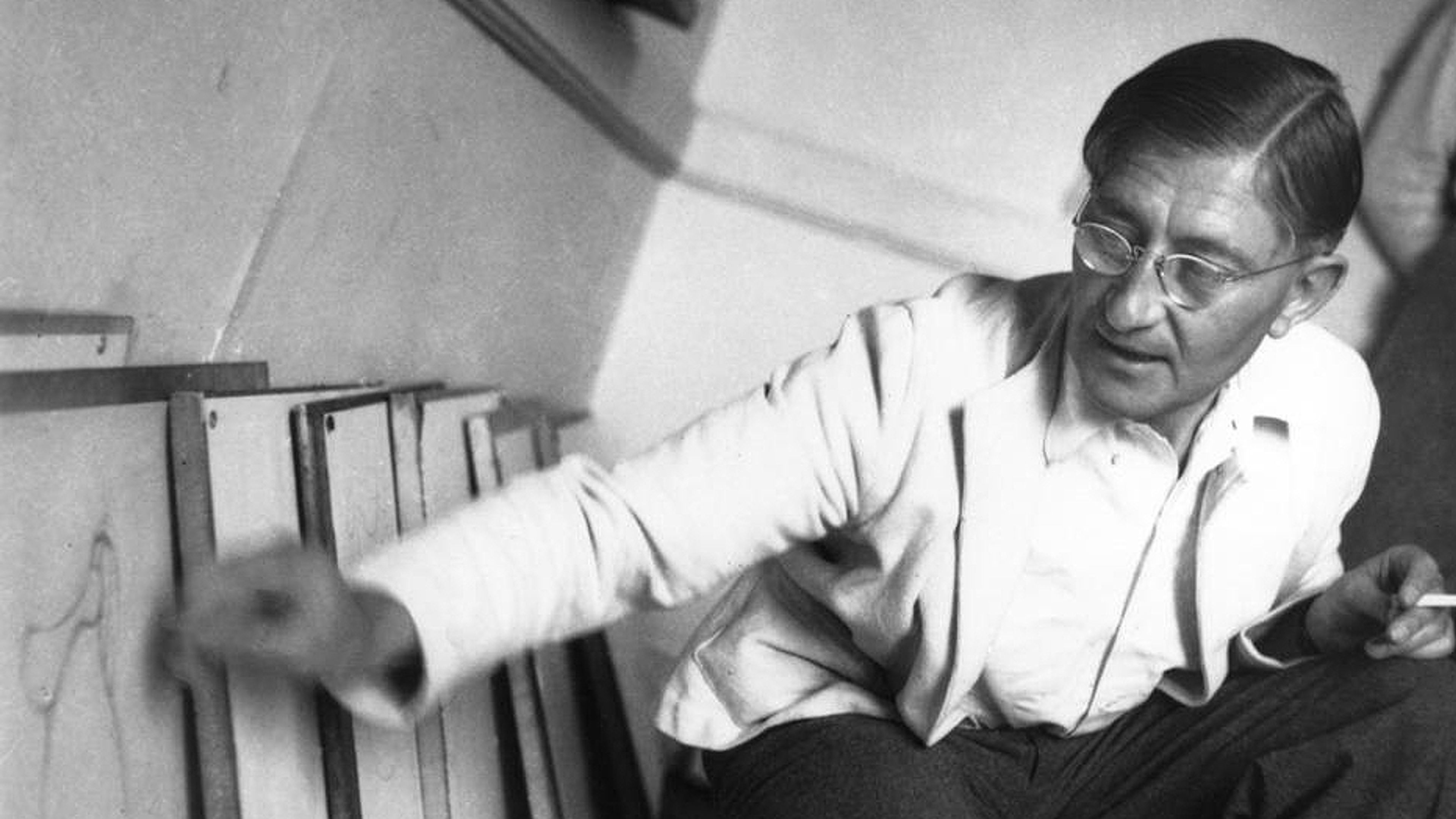
Josef Albers in a drawing class, c.1939-40 (detail). Courtesy Western Regional Archives, State Archives of North Carolina, Ashville, NC.
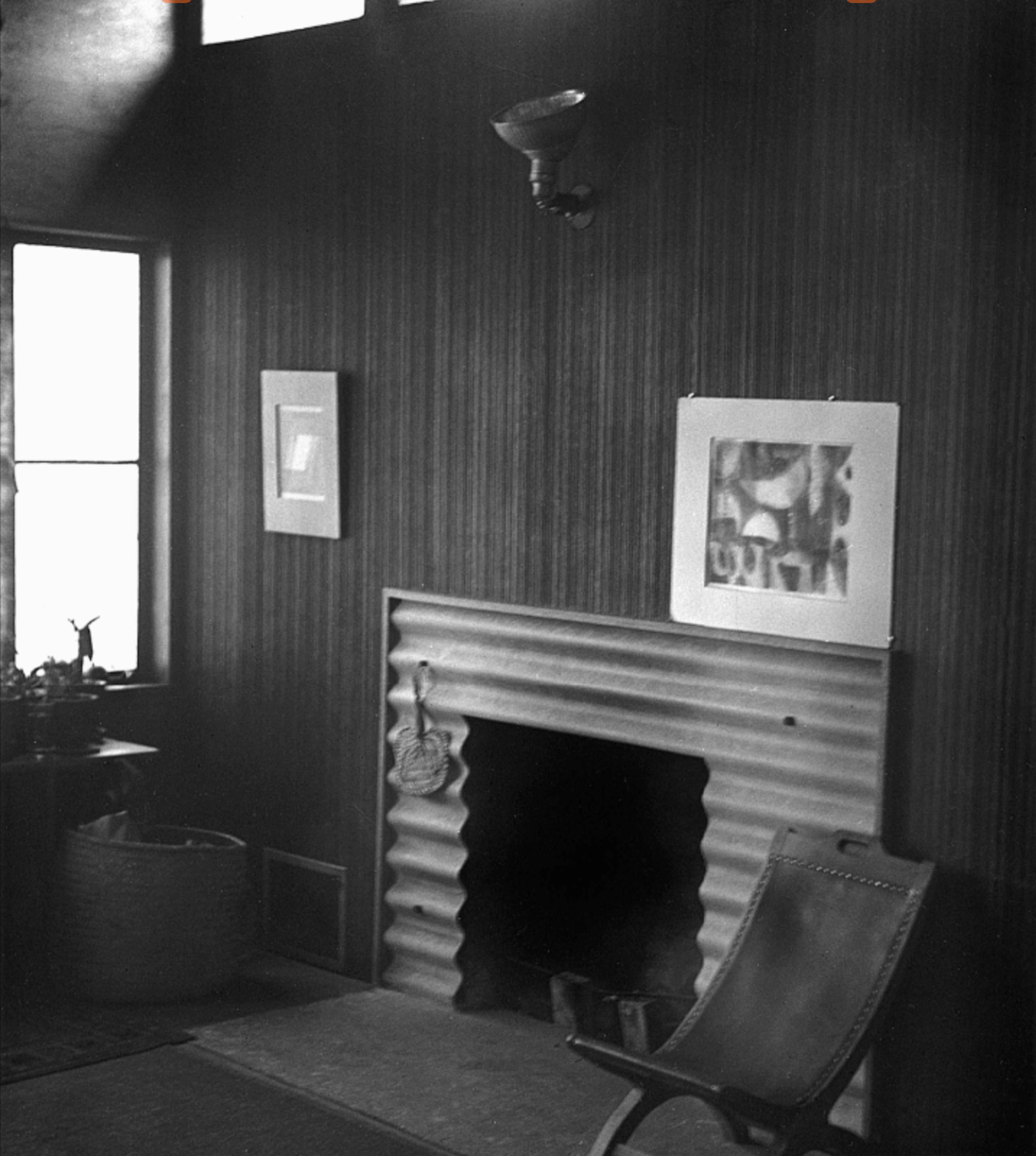
Hazel Larsen Archer, Interior of the Jalowetz Cottage; Untitled (1949) hangs above the fireplace to the left.
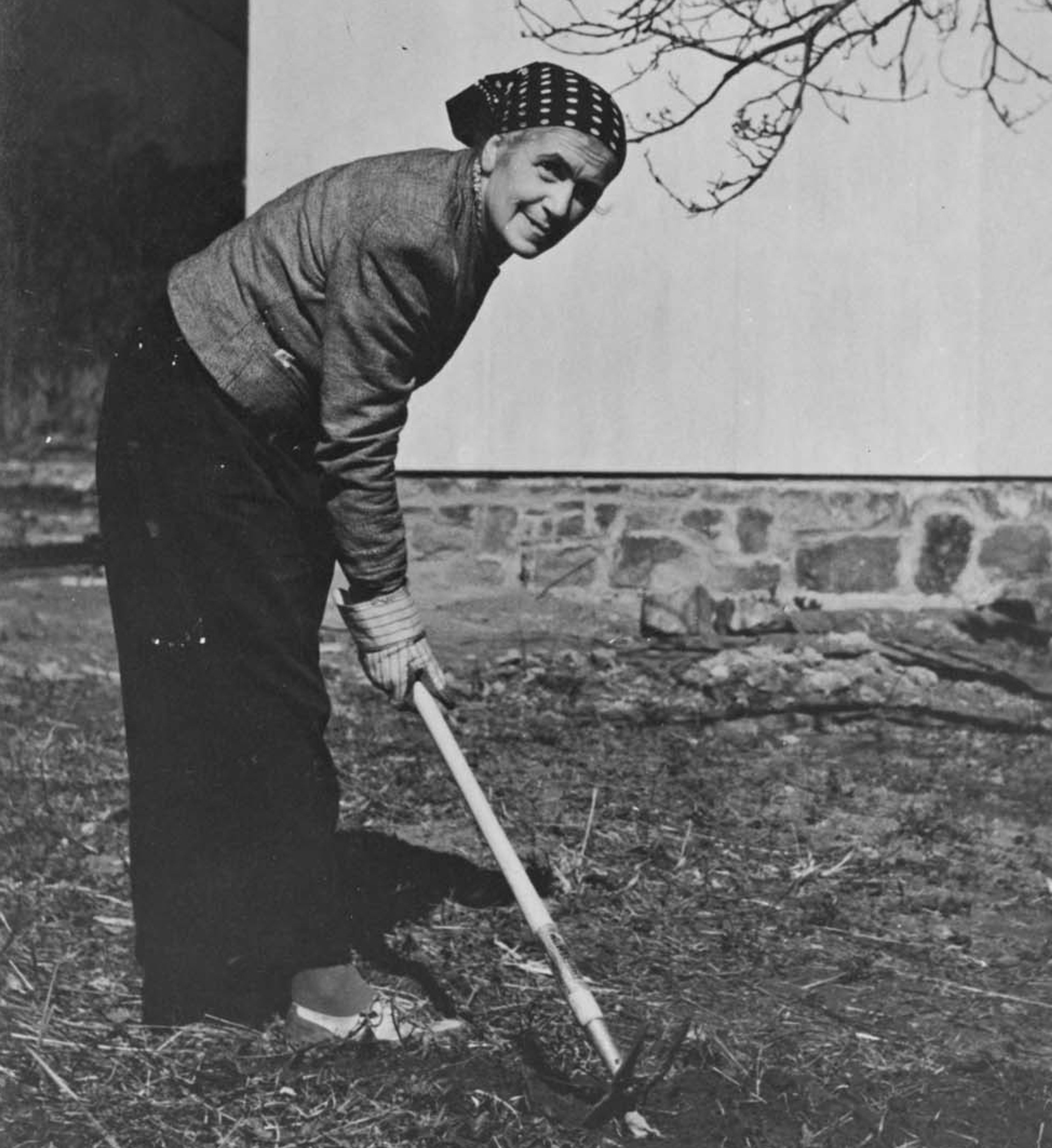
Johanna Jalowetz participating in the work program on the Lake Eden campus at Black Mountain College
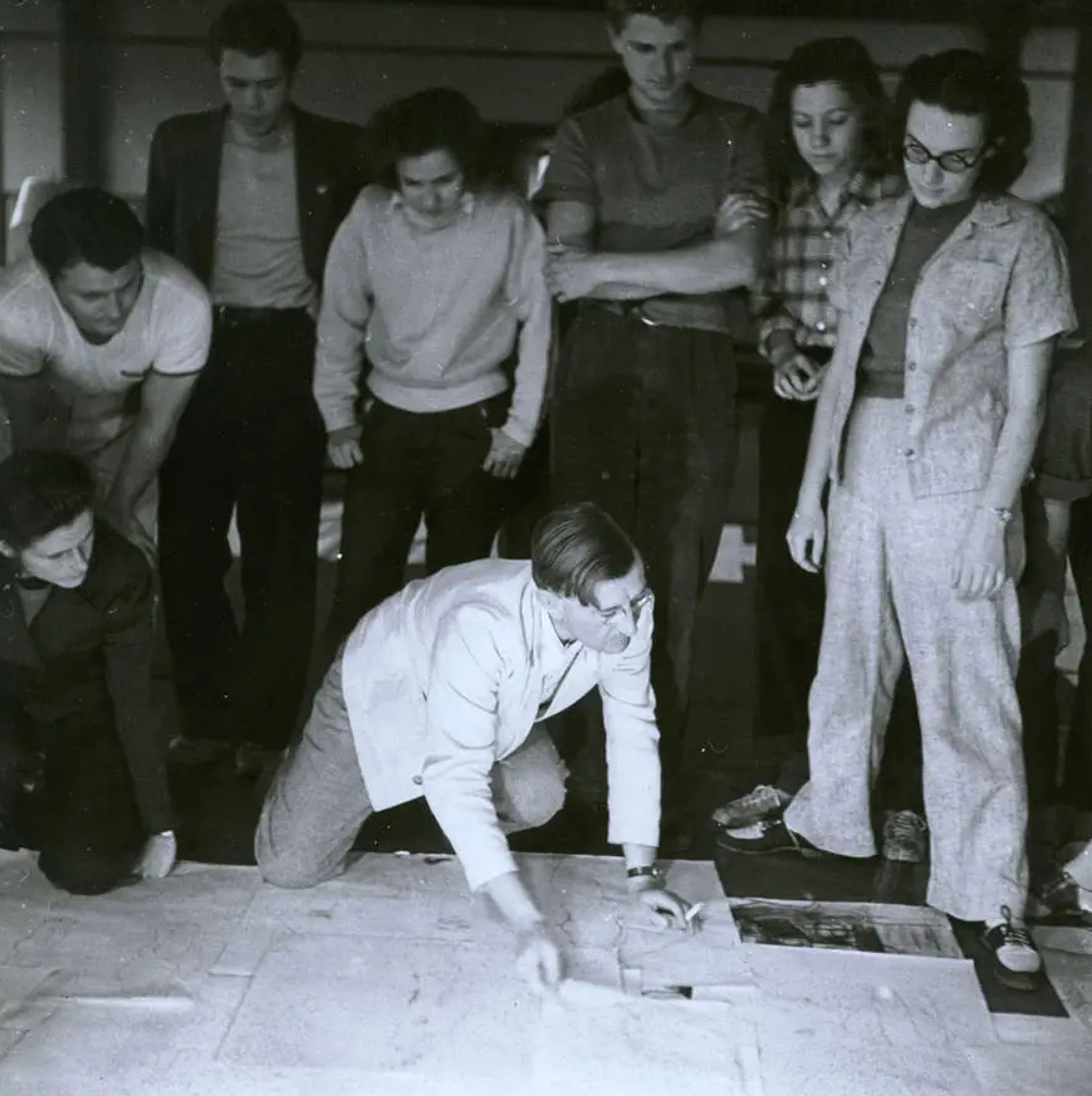
Josef Albers’s drawing class, Black Mountain College, c.1939-40. Left to right: Lisa Jalowetz, Bela Martin, Fred Stone, Betty Brett, Albers (kneeling), Robert de Niro, Martha McMillan, Eunice Shifris. Courtesy Western Regional Archives
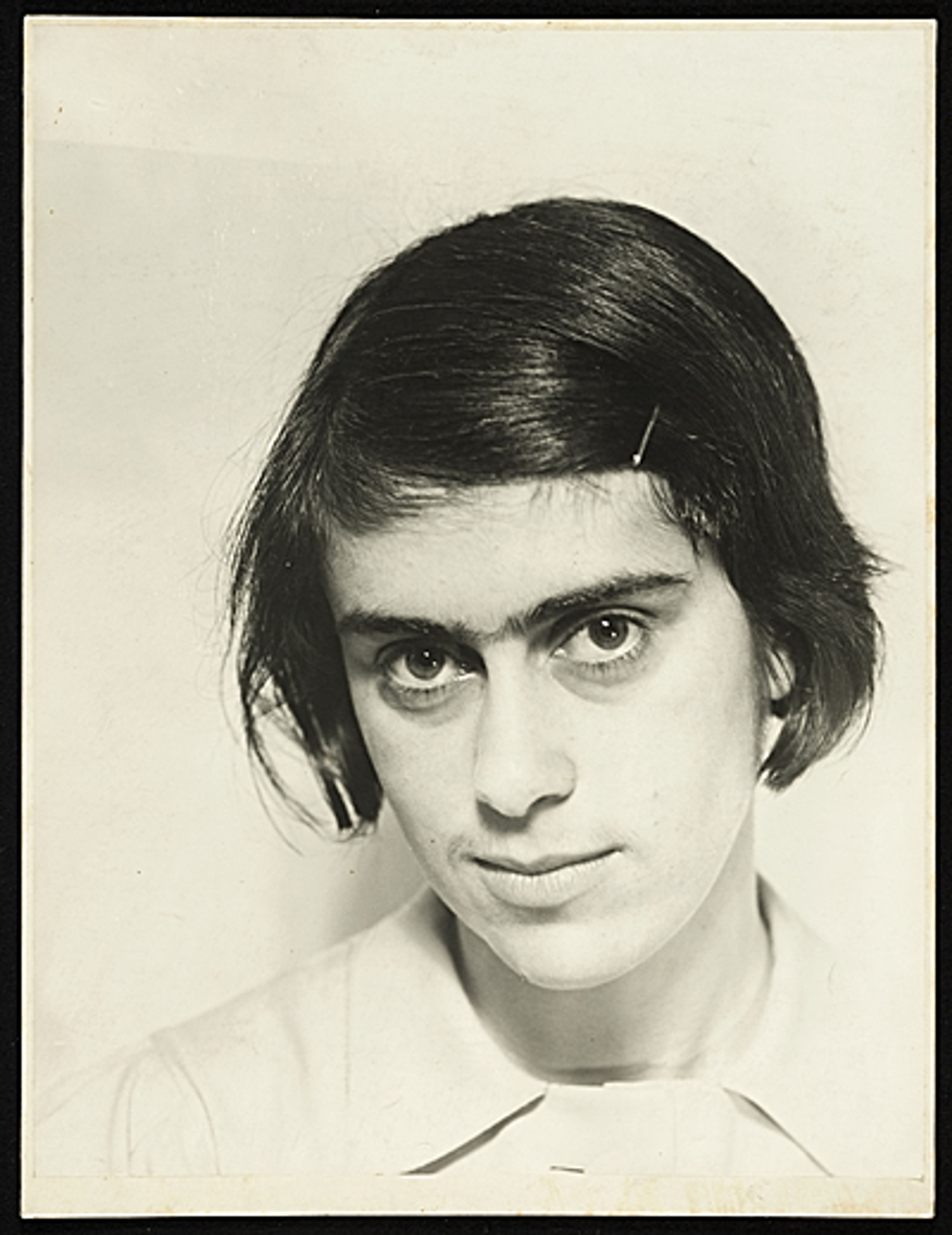
Trude Guermonprez, 1938. Photo by Paul Guermonprez
Albers gave this painting to Johanna Jalowetz (1885–1966), who taught bookbinding and vocal training at Black Mountain College. Johanna and her husband, Heinrich Jalowetz (1882–1946), were emigrés from the former Austria-Hungary, who, like the Alberses, fled to the United States to avoid political persecution under the Nazis. Johanna hung the work in the “Jalowetz cottage,” which was built for the couple and their family by students at the school under the guidance of architect A. Lawrence Kocher. The painting later passed to the Jalowetz’s daughter, Trude Guermonprez (born Gertrud Emilie Jalowetz), a noted textile artist, designer and educator, and has remained in the family since.
The Jalowitz family is notably connected to the arts. Heinrich Jalowetz, a conductor and part of the Second Viennese School, taught Music at Black Mountain College from 1939 to1946. He and Johanna’s daughter Lisa, seen on the left in a photograph of Josef Albers’s drawing class at Black Mountain c. 1939–40, went on to become a designer and assisted her husband, the noted scenic designer Boris Aronson, on numerous Broadway productions.
An inscription on the back of the painting reads:
To Johanna with love June 10 1949 A
Untitled is presented in an artist’s frame cut from a single sheet of wood—a relatively rare practice seen later in some of the Homage to the Square and Variant/Adobe works. Here, the frame reinforces the geometry of the composition.
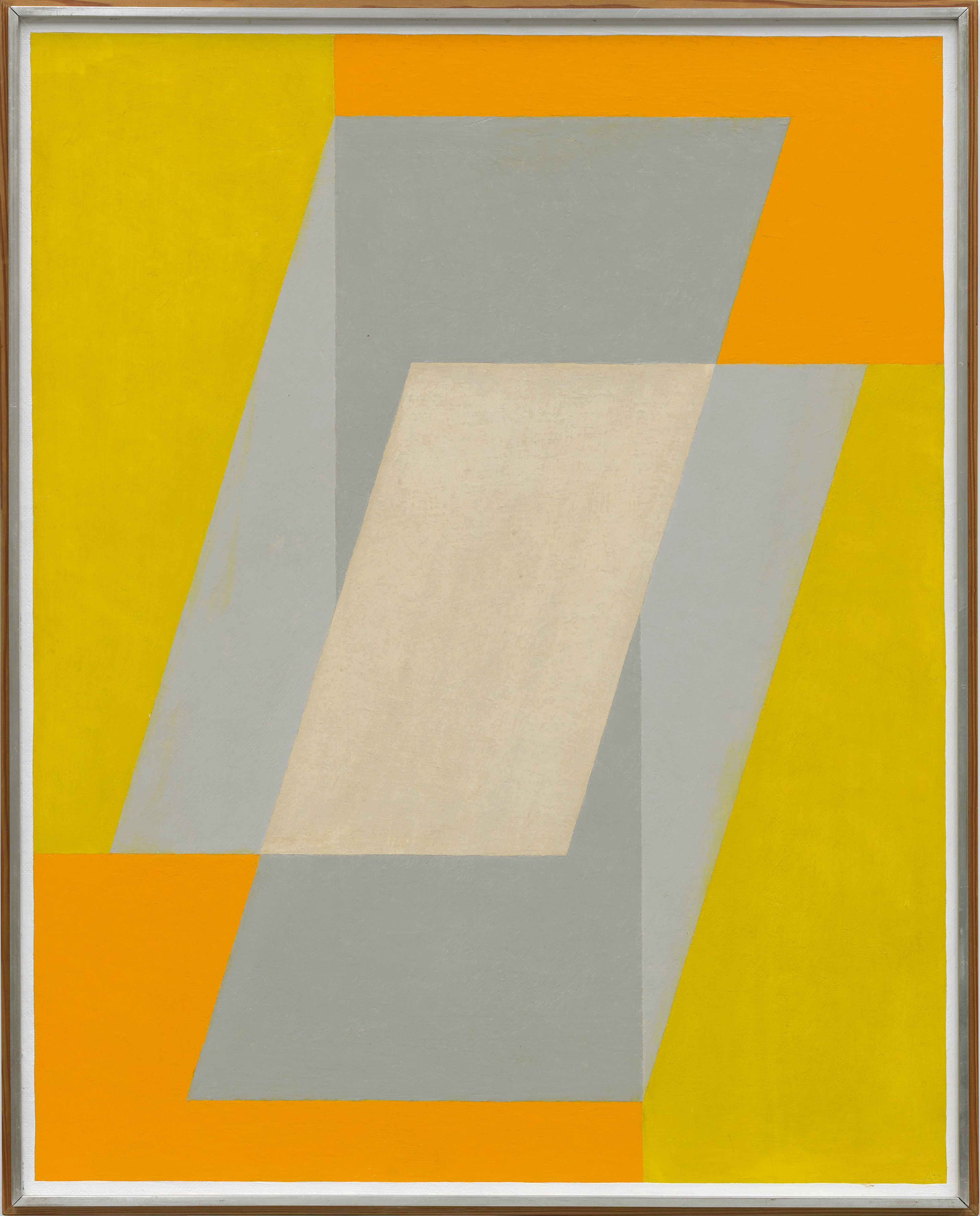
Josef Albers, Oblique White, Grays, Yellow, 1949. Yale University Art Gallery. Gift of Anni Albers and the Josef Albers Foundation, Inc.
The present work shows two intersecting gray parallelograms and orange and rectangular planes of orange and yellow. Where the forms overlap, Albers modulates the color, creating a sense of layering and of the colors interacting—as though light were passing through the forms. The palette seen in Untitled (1949) continued to interest Albers throughout his career, and is seen in numerous later works.
In his notebooks, Albers described this painting as a study for Oblique White, Grays, Yellow (1949), which he later donated to the Yale University Art Gallery, New Haven, Connecticut, where it currently resides. Additional related works include Either … Or (1948; Yale University Art Gallery), and Neither … Nor (1948; Josef Albers Museum Quadrat Bottrop, West Germany).
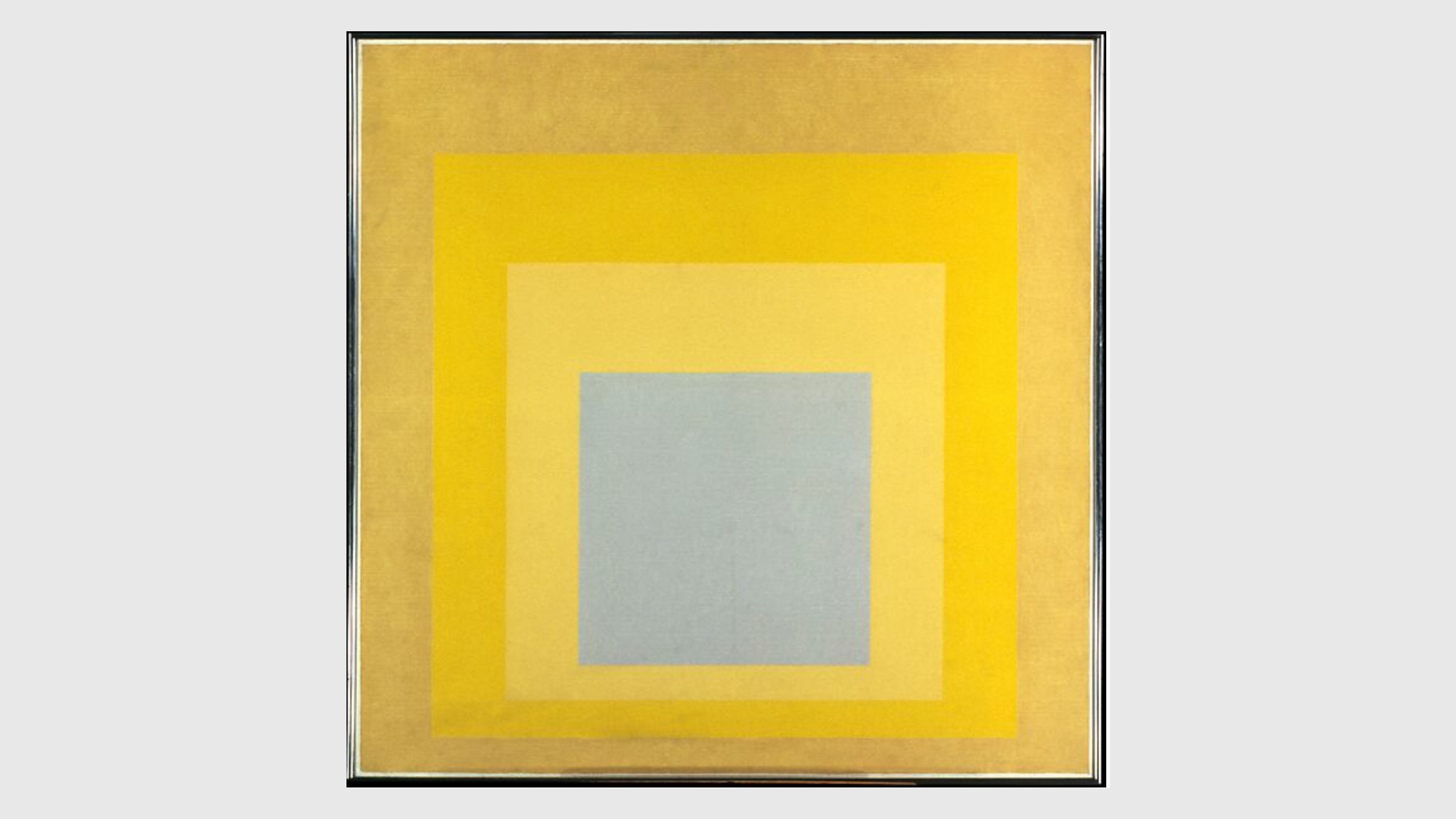
Josef Albers, Homage to the Square: With Rays, 1959. Metropolitan Museum of Art, New York
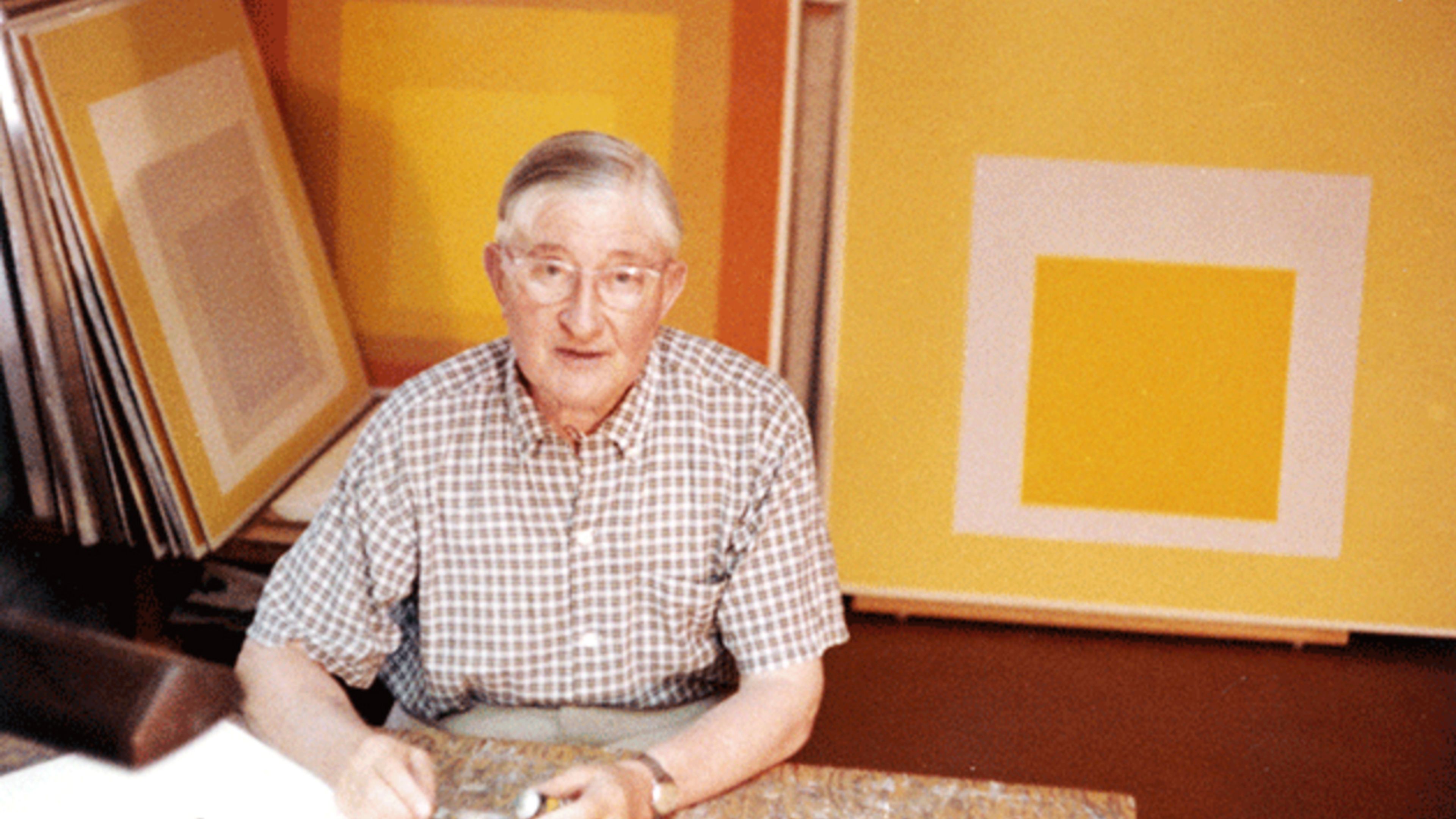
Josef Albers at his studio, August 1960. © The Josef and Anni Albers Foundation / DACS 2021.
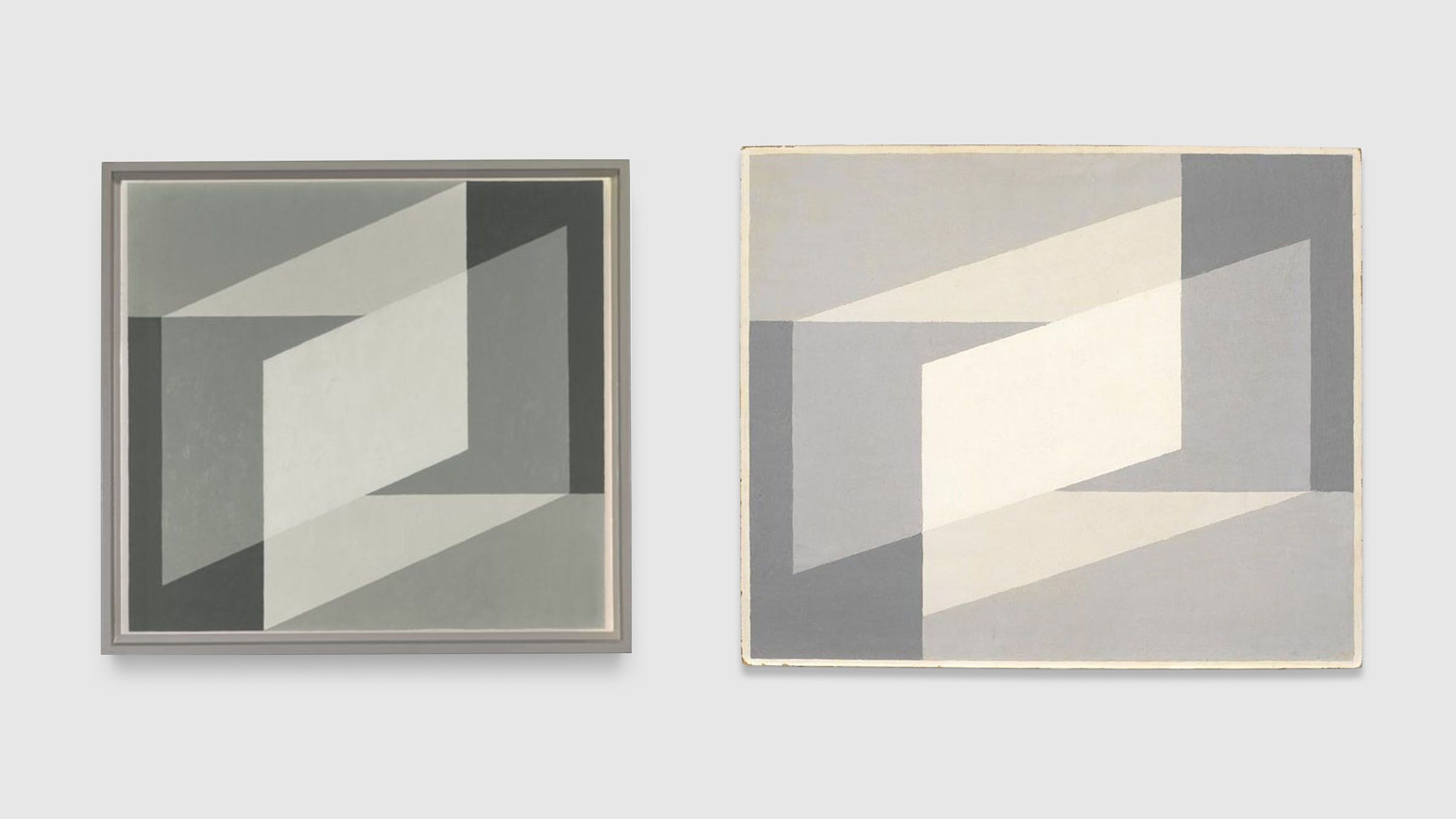
Related works by Josef Albers, from left: Either. . . Or, 1948. Yale University Art Gallery, New Haven; and Neither...Nor, 1948. Josef Albers Mueum Quadrat Bottrop, Germany
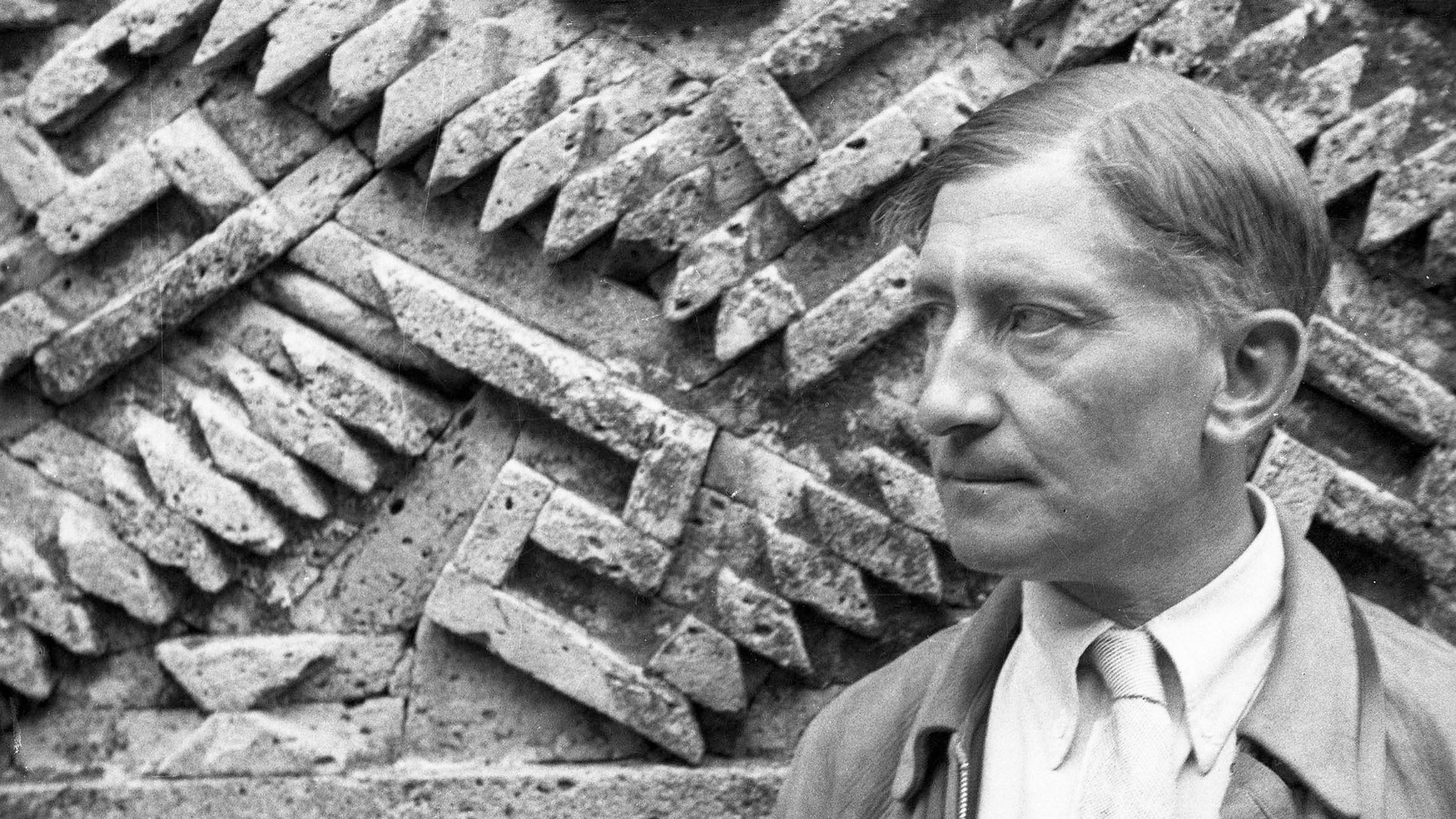
Josef Albers, Mitla, Mexico, photo negative, 1936-1937. © 2024 The Josef and Anni Albers Foundation/Artists Rights Society (ARS) New York/DACS, London

David Zwirner at Art Basel
